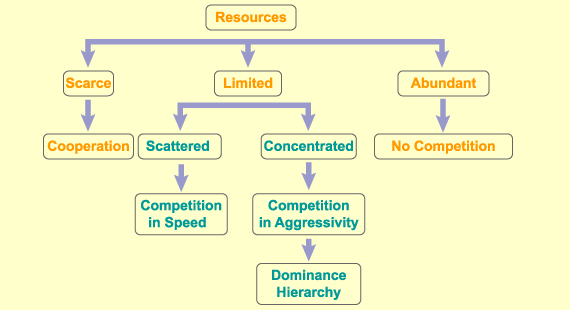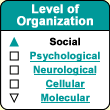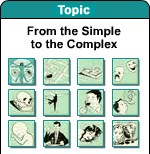| |


Throughout the course of evolution, competition
for survival has been only one side of the story. Mutual aid has been the other.
The cell structures known as mitochondria
evolved from a symbiotic relationship in which the earliest cells contributed
raw materials and bacteria contributed energy. Later on, early humans cooperated
in hunting, migration, and child care. Both competition
and mutual aid were necessary for the modern
human species to evolve. But today, though mutual aid still occurs locally everywhere,
we may well ask whether the competition that plays such an important role in industrial
society, and the wars, pollution, and other problems accompanying it, may end
up destroying our species. | | |
It is practical to
regard social relations as sophisticated tools by which humans apply their superior
mental abilities to satisfy individual needs. Each
of us lives in an environment full of other individuals who often seek their well-being
from the same people and things as we do. The following
diagram shows how the distribution of resources affects the emergence of certain
social behaviours. 
When
resources are limited, two kinds of competition can result. - If
resources are scattered and cannot be defended, people compete through speed,
trying to take the resources before someone else does.
- But
if resources are concentrated enough to be defended, then people compete through
confrontation and aggression.
Because these struggles
demand so much energy from both the victors and the vanquished, aggressive competition
quickly leads to a stable hierarchy based on the dominance relationships that
people have internalized. The winners no longer have to fight the losers for the
resources; the losers concede the resources to avoid trouble. Hierarchies
thus reflect the combined result of everyone’s efforts to come out on top.
At the top of the pyramid, we find relatively peaceful dominant individuals who
remain in biological equilibrium so long as their dominance is not questioned. At
the bottom, we find the dominated individuals who, to avoid punishment, have no
choice but to engage their behavioural
inhibition systems and learn to live with the agony
of resource shortages. We thus see how aggressive competition
gives rise to dominance hierarchies that then define what we call social classes.
But the social classes into which individuals are born do not wholly determine
their social relationships. For one thing, in today’s complex societies,
we can be “dominant" in some areas and “subordinate” in
others. For another, power is not a fixed commodity and varies with the associations
and alliances
that individuals may form.
Because human beings are extremely interdependent,
power often goes to whoever is best at manipulating other people’s dependence.
And what could be better for this purpose than language, the specifically human
tool that can be used to justify anything? Thus, especially if people can
wield language effectively, they can get other people to work for them. In contrast,
a dominant male monkey never goes so far as to exploit a subordinate one. He just
gets to eat first. | |
|





